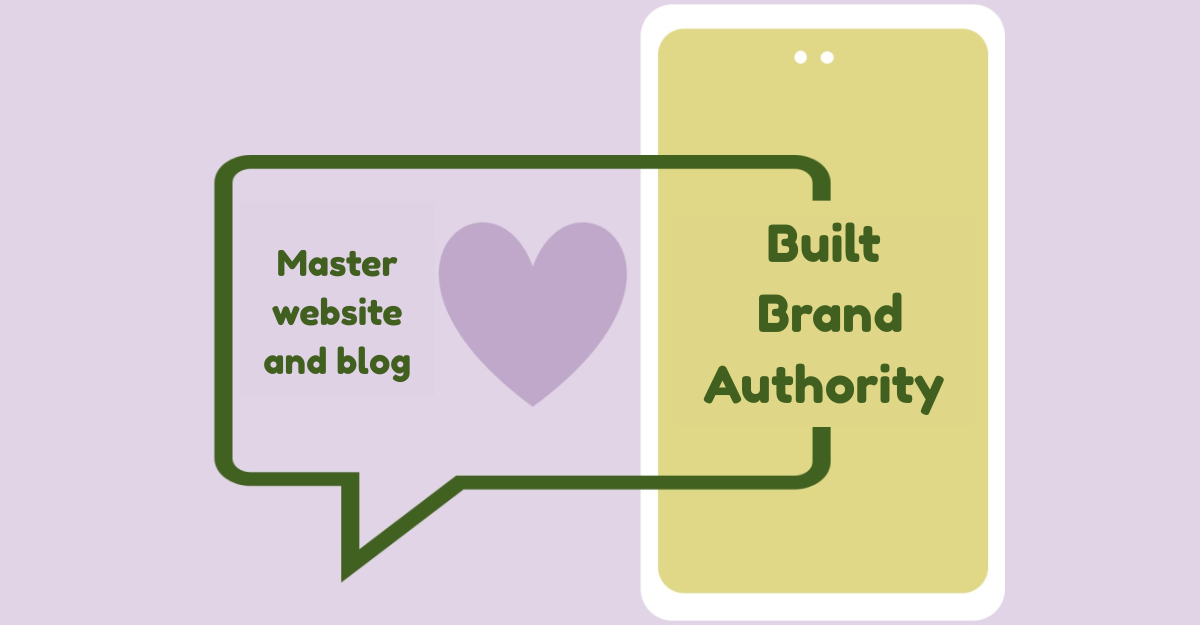Ever wonder how some brands feel instantly trustworthy? You visit their website or blog, and something just clicks. That’s brand authority in action—and your own site can be your most powerful tool to build it.
In this guide, we’ll show you exactly how to build brand authority using your website and blog—in plain English, with simple steps, and practical ideas you can start using today.
Table of Contents
What Does “Build Brand Authority Using Your Website and Blog” Really Mean?
Think of brand authority like earning a great reputation in a small town. If you’re helpful, honest, and always show up, people start trusting you. Online, your website and blog do that trust-building for you, 24/7.
When done right, they:
-
Position yourself as an expert
-
Help search engines trust your content
-
Build loyalty with your audience
So, how do you get there? Let’s walk through it.
1. Your Website: Your Digital Storefront
Your website is often the first thing people notice. Like a clean, welcoming store, it builds instant trust. A messy, outdated site? That’s like a flickering neon sign in a sketchy alley.
Use your website to build brand authority like this:
-
Clear messaging: Say who you are, what you do, and why it matters—fast.
-
Professional design: Clean layout, smooth navigation, mobile-ready.
-
Fast loading speed: Slow sites lose visitors and trust. Use tools like Google PageSpeed.
-
Secure connection (HTTPS): Visitors feel safer, and Google prefers it.
-
Client testimonials & case studies: Real stories from happy customers speak volumes.
2. Blogging: Your Ongoing Conversation
Your blog isn’t just for updates—it’s your voice, your knowledge, and your chance to show up consistently.
Here’s how to boost brand authority with your blog:
-
Stay audience-focused: Solve real problems your readers care about.
-
Be consistent: Weekly or biweekly posts keep momentum going.
-
Use a conversational tone: Be human, not robotic.
-
Incorporate storytelling: Share real experiences and lessons learned.
-
Support with data: Stats, quotes, and examples build trust.
-
Apply SEO techniques: Use headings, internal links, image alt text, and keywords.
3. Share What You Know (Don’t Hold Back)
Sharing valuable knowledge builds trust faster than flashy marketing.
Think of yourself as the helpful neighbor—the one who always has tools, tips, or time to help. Soon, you’re the go-to person everyone turns to.
Try this:
-
Write how-to guides
-
Answer common questions (FAQs)
-
Offer free resources (like checklists or templates)
-
Dive deep—go beyond surface-level advice
4. Use Trust Signals Everywhere
Even small things can boost your credibility and build brand authority:
-
About Page: Tell your story. Be relatable.
-
Certifications & Awards: Proudly display them.
-
Contact Info: Make it easy for visitors to reach you.
-
Privacy Policy & Terms: Boring but essential.
-
Team photos or office shots: Show the humans behind the brand.”
5. Keep the Conversation Going
Your audience wants to feel heard, not talked at. Make your site feel alive by interacting regularly.
Here’s how:
-
Allow comments on your blog
-
Reply to questions or provide feedback
-
Link to your social media profiles
-
Ask for input: “What should we cover next?”
Engagement = trust. It shows you’re present and genuinely care.

Final Thoughts: Start Small, Stay Consistent
You don’t need a big team or fancy tools to build brand authority using your website and blog. You just need clear messaging, consistent effort, and a desire to genuinely help your audience.
Start today:
-
Review your homepage for clarity
-
Plan your next 3 blog posts around FAQs
-
Add a client testimonial or two
Brick by brick, blog by blog—you’re building something powerful.
Remember: Small bricks, laid daily, build empires.
FAQ
1: What is brand authority, and why does it matter?`
Answer:
Brand authority means being seen as a trusted expert in your niche. It matters because when people trust your brand, they’re more likely to buy from you, refer others, and come back again. Your website and blog help build that trust by showing you know your stuff and care about your audience.
2: How long does it take to build brand authority using a blog and website?
Answer:
It’s not overnight, but it’s definitely doable! With consistent blogging, a well-designed website, and useful content, most brands start seeing stronger trust and engagement in 3–6 months. The key is to stay helpful and show up regularly.
3: Do I need to be a writer or SEO expert to build authority with my blog?
Answer:
Not at all! You just need to speak to your audience in a clear, friendly way. Focus on solving real problems they face. Tools and guides (like this one!) can help with SEO basics. You don’t need perfection—just consistency and value.




